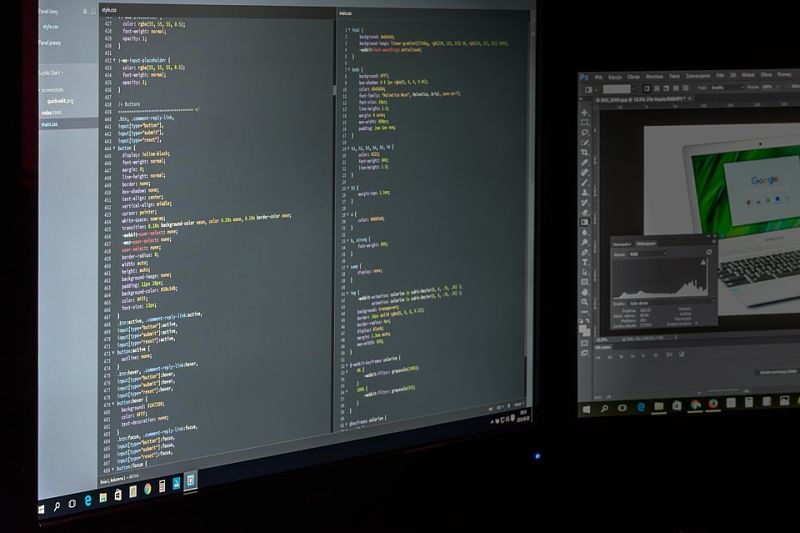2020 was probably the ‘strangest’ year of the past few decades, where the world was put in an unprecedented situation.
This same situation forced us to depend more than ever on technology in order to be able to carry on with our daily lives – not only at work but also at home.
Arising needs caused the world to undergo a huge shift towards digitisation in 2020 – thanks to the emergence of major technological innovations as well as the disappearance of many others.
In this post we are going to take a look at some of the things we think will be trending in the technical world this year... Are you ready to bet?
Applied AI
In recent years we have seen artificial intelligence go supernova as a result of all the research that has been done – and the great progress made – in this field, making it one of the tech topics that is most widespread in pretty much all research areas.
Virtually all companies now use machine learning algorithms and models, especially those that were born in the digital era and those that have suitably adapted.
From the point of view of an average user, this technology is pervasive in certain types of fields such as e-commerce and ad management, where the user segmentation work it does is quite clear and noticeable.
It seems, however, that other use cases are not reaching all of us, instead remaining in papers from research bodies or mere curiosities such as mobile apps that show us how we’ll look when we’re old.
2021 will be the year when we will see an explosion in real, productive applications of this technology that will be available to all of us as end users.
Some graphic design suites that are well known in the professional milieu have already taken some steps in this direction by providing machine learning technology-based filters – but this is just the beginning.
Augmented Reality/Mixed Reality
Augmented Reality technology generated a lot of hype when it first came on the market, resulting in many aspirational proofs-of-concept and small developments for testing its capabilities.
The limitations of both the software and the hardware available at the time brought many of these projects to a standstill, especially when it came to applying them at a professional level.
The state of the art did not allow attaining the precision levels needed in many of the use cases; thus, this technology was only applied in certain market niches.
The situation is now changing in the entertainment field, which is one of the areas where this technology has been put to greater use – in some cases with great success.
Devices are advancing by leaps and bounds, many of them aimed at improving hardware capabilities to achieve hitherto unseen precision: stereo cameras – and even LiDAR devices – built into the latest devices from major manufacturers will make a big difference this year.
Devices will be able to know in a much more faithful way the real world on which they will work ‘their magic’.
Accurate measurements of elements and three-dimensional mapping of rooms, or even complete interiors, are possible with the information that can be obtained thanks to these hardware improvements – without losing sight of all the socialisation-related possibilities that would open a potential window to the world and allow us to be closer to our loved ones during this very complicated state of affairs.
It’s time to bring together all these aspirational proofs of concept and get down to work!
Conversational interfaces + NLP
Although they’ve been around for many years, conversational interfaces have become increasingly popular over the last decade thanks to being incorporated into our mobiles and low-cost home devices.
This has been the starting signal for a race in which almost all technology giants are taking part.
From a software development angle, creating voice user interfaces enabling complex conversations to take place in a natural manner is still a quite difficult endeavour.
To some extent, the expertise gained by professionals in the field of conversational design has slightly lessened these problems, thus resulting in some really interesting applications – but at excessively high development costs.
The progress made in natural language processing (NLP) in the past two years (eg the work done on GPT-3, which is quite possibly one of the most relevant advancements made in 2020 from a computational point of view) may turn out to be a breakthrough in this technology, which could precisely allow these complex conversational interfaces to be created in a much simpler way.
Hybrid cloud as a commodity
The cloud has brought about big changes in the business world. Big companies that were used to having their own data processing centres have been gradually migrating their workloads, looking to reap the great benefits the cloud can bring: cost reduction as a result of pay-per-use models, scalability, managed services, and so on. The cloud has become part of our daily lives.
These migrations, however, have in some cases led to some mixed feelings, mainly due to the high dependence on the cloud service provider, which owns all the infrastructure that supports our business.
The big cloud platforms have allayed this fear by agreeing to QoS SLAs that were unheard of not too long ago. Our infrastructure is hence safe from faults or downtimes. However, these are not the only things companies have to be afraid about when they have developed such a strong dependence overnight.
Multi-cloud and cloud-hybrid technologies have been evolving for some years now to tackle this problem, managing to do away with the complexity stemming from managing multi-cloud environments by merging management and maintenance tasks and even launching our services on different clouds in a quasi-transparent manner.
It looks like 2021 will be the year when this technology will start to be commoditised, thus ceasing to be something complicated or exceptional and becoming part of the standard way of doing things – just as what happened with the cloud a few years back.
Real-time companies
We live in the age of data, information and knowledge, a hyper-interconnected world where huge amounts of data are continually being transferred every second of every day, achieving never-before-seen growth rates and setting trends that break records year after year.
A lot has been said about the value of data, which is why large companies have been working hard to collect more and more information, accumulating and hoarding it to subsequently process and analyse it to glean valuable information they can use to make better decisions.
The above-noted growth and speed of information have, however, a side effect that undermines much of the efforts made by these companies: information loses its value increasingly quickly with every day that goes by.
We are now facing a situation where many companies need to adapt continuously and, above all, very rapidly in order not to miss the waves of market or competition trends.
Standard monthly or quarterly reports are no longer meaningful in many cases; the past has lost most of its value.
Today many companies are already behaving aggressively, migrating their information processing systems in scheduled batches to real-time (technically speaking, it would be more appropriate to refer to this as ‘near real-time,’ or NRT) information environments that provide insights and knowledge much more nimbly, thereby providing them with greater capacity and speed, enabling them to turn on a dime. 2021 will mark the consolidation of this trend.
Conclusions
We here at Paradigma will be keeping a close eye on all these developments and a lot more things and keep you apprised. 2021 is shaping up to be a really interesting year! Let’s see how many of these predictions we end up getting right.
Comments are moderated and will only be visible if they add to the discussion in a constructive way. If you disagree with a point, please, be polite.







Tell us what you think.